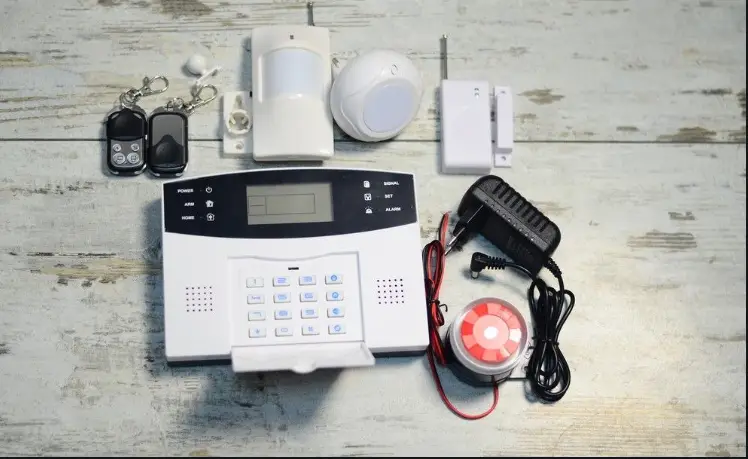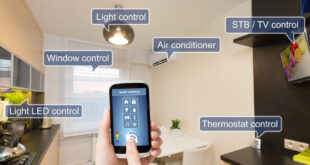
Many would opt for DIY projects if they’re on a tight budget—and home surveillance has the same story. In fact, a basic DIY home security system may cost at around $225 and top out at about $800 or so, which is almost 50-70% cheaper than other professional installation service fees.
But, it’s not only about being frugal. DIY home security installation follows your schedule, as well. Say, if you’re working the night shift or you’re a night owl, you can do the installation early in the morning or in the middle of the night. Plus, it comes with the bonus of not letting a stranger (installers or technicians) step inside your place.
While professional installation doesn’t need you to do anything, what you’ll do with DIY installation is mostly negligible. What’s more, you can get it up and running right away in a day!
Page Contents
Home Security Systems: Landline versus Wireless
Before going through the how-tos or must-dos in DIY home security installation, let’s first differentiate the two general types of home security systems—landline and wireless. Know their differences first so you’ll not regret anything at the end of the day.
A landline home security system utilizes radio frequency and wired phone connection to transmit alerts when its sensors have been triggered. That’s why it’s called ‘wired’ security system, as well. It often requires some drillings and professional installation to connect to your phone line, which you might mess up if you’re reckless while doing it yourself.
In terms of advancement, wireless is superior. Not only it is more convenient to install than a wired system, but also because it has more features and regular security updates, giving you more control of your device. For the record, many homeowners are now relying on wireless systems since the emergence of smart home automation.
Despite being outdated, many homeowners, especially with children, still settle for the wired security system. “Smart” and more digitized home security system has been allegedly associated with a higher level of electromagnetic frequency (EMF) than wired ones. Studies show that EMF can result in children’s slower development, infertility, cardiovascular diseases, risks of cancer, and possibly more.
Whether you’ll end up choosing a wired or wireless home security system, DIY installation is easier and more fun than you’ve imagined. Plus, it’s a smart investment! You only have to follow the guidelines given by your security provider. Other than that, here are some quick DIY home security system installation tips.
Set Up Stand-Alone Cameras
Stand-alone security cameras are probably the easiest home security installations you can do. If they’re wired, you only have to plug them into other devices. By contrast, you’ll do almost nothing if they’re wireless.To be sure, taking the most convenient option doesn’t always mean paying the most money. Take a 20-dollar Wyze Cam V2, for example. If you need more information about this stand-alone cameras, security Baron has made a Wyze Cam review.
Also, these security cameras offer off-the-shelf, out-of-the-box surveillance. More importantly, it is packed with features and is simple to operate. And once again, you can literally finish setting it up in minutes!
Mount Surface Transmitters and Magnets
Installing surface-mounted transmitters and magnets on your windows or doors can be considered as old, yet gold. The best part is that it has the same features as other modernized security systems, but you’ll save more bucks with it. How to install them neatly? The Family Handyman provided some ways:
- Place the transmitters and magnets on your windows’ sill and sash, so you can ventilate your house while securing it from intruders going through the windows.
- Use “recessed” magnetic contacts to open and close casement windows easily.
- Use “plunger” contacts on windows and doors for a hidden.
- For multiple windows, connect all contacts to a single transmitter.
Opt for Removable Adhesive Tapes
For most wireless security systems, you’ll have to hammer 1-3 small nails into the wall so you can successfully install their panels. This can be a big problem for people who are occupying a studio apartment. Most of the time, landlords don’t allow renters to create holes in the walls. If this is the case, use removable double-sided adhesive instead.
Takeaway
While doing home smart security installation yourself is a smart investment; it isn’t the home security solution for everyone. There’s always a chance to improperly install it, which, in turn, will make you run of going unprotected in the long run. If you’re not confident enough but would love to DIY, it’s best to do it with someone who’s good at it.
Author’s Bio:
Tyler Pack is a writer and a blogger. He loves to write about technology, business, real estate, and home security. In his free time, Tyler spends time with his wife and kids.
 A Very Cozy Home Home Decor Tips and Ideas
A Very Cozy Home Home Decor Tips and Ideas 
